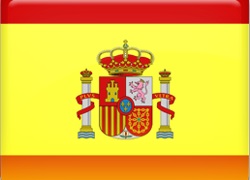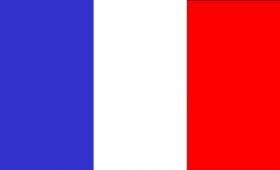"In a playful and provocative manner, Salvador Dalí described his moustache as 'very pointed, very aggressive,' revealing it to be more than mere facial hair—a bold artistic statement. During an exclusive interview with the BBC, the Surrealist artist disclosed the secrets behind the most famous moustache in the world."
Salvador Dalí Discusses His Iconic, 'Very Aggressive' Moustache


In 1955, Spanish artist Salvador Dalí – who was born 120 years ago this week – sat down with veteran broadcaster Malcolm Muggeridge on the BBC's Panorama and discussed the most potent symbol of his artistic identity – his moustache.
Muggeridge acknowledged that he should really be asking the famed Surrealist about the bizarre, dreamlike images that made his name, but the sight of Dalí's flamboyantly lustrous whiskers proved irresistible to him.
What followed, for a BBC programme known for its investigative current affairs documentaries, was a fittingly surreal interview.
"The first question that I want to put to you – it really ought to be about modern art but I can't help it – there is some delicious frivolity in you that makes me ask it – how did you manage to produce those magnificent moustaches?" said Muggeridge.
"In the beginning of this moustache, I used one very natural product," replied Dalí. "Dates, you know the fruit? In the last moment of dinner, I do not clean my finger and I put a little in my moustache and it remains for all afternoon very efficiently.
"But now I use one real product, very good, [found] in the Place Vendôme, Hungarian wax Pinaud [a French brand that has been going since 1810]. It's a very well-known wax already. Proust, Marcel Proust [the French novelist], uses the same."
"Yes, but his was a little pointed one, wasn't it," replied Muggeridge, warming to the subject. "It didn't have a splendid upturn like yours."
"He used this wax but he used it in another manner or another mode in one depressing… way. A little depressing and melancholic. My moustache contrarily is very gay, very pointed, very aggressive."
Muggeridge continued, pressing the artist for more details on his gravity-defying facial hair, discovering the artist cleaned it every evening – allowing it to become soft and droop down overnight – the time it took to get ready in the morning – a brisk three minutes – and how his moustache served as a practical tool for his "inspiration".
Muggeridge was not alone in being captivated by the artist's exuberantly bold whiskers. Synonymous with the artist himself, Dalí's cartoonishly waxed moustache had become a thing of legend.
Dalí had sported a hirsute upper lip since the 1930s, and initially, it was a relatively modest affair based on a look popularised at the time by US actor Adolphe Menjou. But as the years progressed, the artist's moustache, "like the power of my imagination, continued to grow," as Dalí would later put it in a photo book dedicated to his facial hair in 1954.
By the 1940s, he was growing and styling his whiskers to increasingly dramatic heights, their upturned ends reminiscent of another earlier Spanish painter, Diego Velázquez. Dalí's distinctive facial hair served as a bold statement of intent, embodying rebellion, creativity, irreverence, individuality and absurdity.
"I can think of few other artists who pursued fame and fortune as aggressively as Salvador Dalí. He actively turned himself into a brand, shamelessly promoting himself through any means necessary," said art historian David Dibosa in the documentary Art on the BBC in 2022.
"And as with any brand, to be truly successful, you need a logo that's instantly recognisable."
Whether curled into a figure of eight, bedecked by flowers or tied in a bow, his moustache became as carefully crafted as his public image. Its exaggerated curves, like his paintings, confronted viewers with the absurd, challenging them to question convention and their own reality.
It served to solidify his image in the public's mind, a dramatic visual cue for the eccentric, theatrical and irreverent spirit that defined Dalí's artistic persona.
He would, at times, use his moustache as a paintbrush or feature it in paintings, including Self-Portrait with Fried Bacon, further blurring the boundary between art and life, serious and comedic, the real and surreal.
And as artistic brands go, it has proved remarkably durable. Its surreal silhouette has adorned everything from jewellery to coffee mugs and was even painted on a Delta Air Lines 757 plane in 2010. The same year, a poll for Movember, an annual event for growing facial hair, found it to be the most famous moustache of all time.
In a suitably surreal epilogue, which illustrates his playful motif's staying power, when Dalí's body was exhumed for a paternity test in 2017, almost three decades after his death in 1989, his whiskers were still entirely intact, looking like clock hands reading 10.10.
"I was eager to see him, and I was absolutely stunned," Narcis Bardalet, who had been in charge of embalming Dalí's body, told Spain's RAC1 radio station at the time.
"It was like a miracle... his moustache appeared at 10 past 10 exactly."

 বাংলা
বাংলা  Spanish
Spanish  Arabic
Arabic  French
French  Chinese
Chinese 
